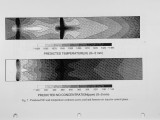| OCR Text |
Show E 1600 CL ^1400 o 2 1200 c 1000 CD £ 800- 0 600- D "eg 400- l_ 0 Q. 200h E <D 0 - - 5 rebum coal burnout air I T i i i i i I i i ti i i o c CD 2 c 0 O) 1 >» o 0.0 0.5 1.0 1.5 2.0 2.5 Axial distance (m) Fig.3 Variation of axial temperature and gaseous concentrations along the furnace length (Thoresby, SR1=1.03, SR2=0.94, SR3=1.09, RF=21%). he axial NO concentration dropped rapidly from an initial 800ppm at the start of the rebum zone (corresponding to a baseline N O concentration at the exit of 600ppm) to a minimum of 300ppm just prior to the burnout air injection. This is an indication that strong N O reduction reactions take place in the rebum zone and demonstrate the effectiveness of coal as a rebum fuel. However, as soon as burnout air is introduced, some N O is formed in the burnout zone (concentration rising to around 420 ppm) by the residual nitrogen in the char together with any unconsumed volatile nitrogenous fragments. There is a slight subsequent reduction of N O in the burnout zone possibly by char as the oxygen is consumed, but the exit concentration is still above the rninimum value reached at the exit of the rebum zone. Similar trends were observed with the other test coals. The effect of increasing reburn zone residence time on extent of N O reduction is shown in Fig. 4. The N O reduction increased with increasing residence time up to a maximum at around 450 ms, beyond which only marginal gains in N O reduction were obtained. Most of the experimental data presented in the paper are at a residence time of 450 - 500 ms. The optimum residence time is coupled to the mixing conditions in the rebum zone so it is difficult to make comparisons between different experimental systems and furnaces. Rapid mixing will enhance the reaction processes so that the time to equilibrium is reduced, but rapid mixing may also prove to be a disadvantage since poorer mixing of coal and combustion products may form c o o _ O 45 40 35 30 25 20 15 - 10 Thoresby Coal Pittsburgh No.8 150 300 450 600 750 Rebum zone residence time (ms) 900 Fig.4 Effect of residence time on N O reduction (SR1=1.03, SR2=0.94, RF=20 - 24%,Tpr=1573K). |





















